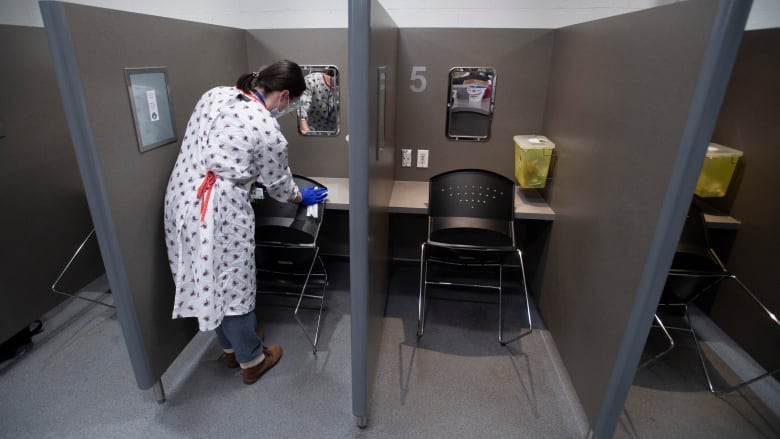Alberta
Over 800 overdose deaths in 2021 – Alberta RCMP recognize International Overdose Awareness Day

News release from Alberta RCMP
Alberta RCMP recognizes International Overdose Awareness Day 2022
In 2021, Alberta lost over 800 lives to meth-related accidental overdoses – a 28% increase from such tragic fatalities in 2020. On Aug. 31, 2022, the Alberta RCMP recognizes International Overdose Awareness Day by launching a methamphetamine awareness campaign in collaboration with the Canadian Integrated Response to Organized Crime. The campaign will help educate, protect and inform the public about negative impacts of methamphetamine and other synthetic drugs – as well as highlight the Alberta Clandestine Lab Enforcement and Response (CLEAR) Team and their role as a liaison with the chemical industry.
Methamphetamine is pervasive in our communities and has contributed to property crimes and crimes of violence. The Criminal Intelligence Service Canada identified methamphetamine as having one of the highest threat levels “due to its geographical reach, high burden of harm, and increased involvement of organized crime groups.” According to a 2017 Canadian Tobacco, Alcohol, and Drugs Survey, 3.7% of Canadians have used methamphetamine at least once in their lifetime. While methamphetamine use among the general population in Canada may be low, the Canadian Centre on Substance Use and Addiction notes that “there has been a dramatic increase in the availability and harms associated with methamphetamine in Canada” since 2013 – with notable trends in Western regions.
The Alberta CLEAR Team provides specialized operational support in identifying, assessing, processing and dismantling illegal synthetic drug production labs, processing locations, dump sites and Butane Hash Oil labs. Often, the CLEAR Team is called upon to liaise with the chemical industry in Alberta to ‘back track’ chemical precursors and facilitate the real time exchange of information regarding methods of diversion and indicators of suspicious transactions.
In the coming months, Alberta RCMP will share information at @AlbertaRCMP on Twitter and the @RCMPinAlberta Facebook page. To keep updated, follow #MethHurtsCommunities.
Quick Facts
Table 1: Alberta Substance Use Surveillance System
| Provincial Statistic | 2020 | 2021 |
| Meth-related accidental overdoses | 655 | 836 |
| Emergency Department visits related to substance use | 10,846 | 10,401 |
| Naloxone kits given out (community site and pharmacy kits) | 100,257 | 154,171 |
| Self reported reversals | 8,554 | 15,623 |
| Total number of EMS responses to opioid related event | 5,245 | 8,253 |
| Weekly average of EMS responses to opioid related event | 98.96 | 158.71 |
Source: https://www.alberta.ca/substance-use-surveillance-data.aspx
Table 2: Drug Analysis Services
| Provincial Statistic | 2020 | 2021 |
| Total number of stimulants identified during analysis per year | 7,285 | 7072 |
| Number of methamphetamine samples | 4,236 | 4,095 |
Table 3: Alberta RCMP Methamphetamine Offences
| Offence Type | 2020 | 2021 |
| Possession | 1,747 | 1,190 |
| Trafficking | 339 | 259 |
| Possession for the Purpose of Trafficking | 404 | 373 |
| Importing/Exporting | 2 | 0 |
| Possession for the Purpose of Exporting | 1 | 0 |
| Production | 18 | 5 |
| Possess/Produce/Sell/Import Anything Used to Produce/Traffic | 6 | 4 |
| Grand Total | 2,517 | 1,831 |
Source: RCMP Police Reporting and Occurrence System
Alberta
Low oil prices could have big consequences for Alberta’s finances

From the Fraser Institute
By Tegan Hill
Amid the tariff war, the price of West Texas Intermediate oil—a common benchmark—recently dropped below US$60 per barrel. Given every $1 drop in oil prices is an estimated $750 million hit to provincial revenues, if oil prices remain low for long, there could be big implications for Alberta’s budget.
The Smith government already projects a $5.2 billion budget deficit in 2025/26 with continued deficits over the following two years. This year’s deficit is based on oil prices averaging US$68.00 per barrel. While the budget does include a $4 billion “contingency” for unforeseen events, given the economic and fiscal impact of Trump’s tariffs, it could quickly be eaten up.
Budget deficits come with costs for Albertans, who will already pay a projected $600 each in provincial government debt interest in 2025/26. That’s money that could have gone towards health care and education, or even tax relief.
Unfortunately, this is all part of the resource revenue rollercoaster that’s are all too familiar to Albertans.
Resource revenue (including oil and gas royalties) is inherently volatile. In the last 10 years alone, it has been as high as $25.2 billion in 2022/23 and as low as $2.8 billion in 2015/16. The provincial government typically enjoys budget surpluses—and increases government spending—when oil prices and resource revenue is relatively high, but is thrown into deficits when resource revenues inevitably fall.
Fortunately, the Smith government can mitigate this volatility.
The key is limiting the level of resource revenue included in the budget to a set stable amount. Any resource revenue above that stable amount is automatically saved in a rainy-day fund to be withdrawn to maintain that stable amount in the budget during years of relatively low resource revenue. The logic is simple: save during the good times so you can weather the storm during bad times.
Indeed, if the Smith government had created a rainy-day account in 2023, for example, it could have already built up a sizeable fund to help stabilize the budget when resource revenue declines. While the Smith government has deposited some money in the Heritage Fund in recent years, it has not created a dedicated rainy-day account or introduced a similar mechanism to help stabilize provincial finances.
Limiting the amount of resource revenue in the budget, particularly during times of relatively high resource revenue, also tempers demand for higher spending, which is only fiscally sustainable with permanently high resource revenues. In other words, if the government creates a rainy-day account, spending would become more closely align with stable ongoing levels of revenue.
And it’s not too late. To end the boom-bust cycle and finally help stabilize provincial finances, the Smith government should create a rainy-day account.
Alberta
Governments in Alberta should spur homebuilding amid population explosion

From the Fraser Institute
By Tegan Hill and Austin Thompson
In 2024, construction started on 47,827 housing units—the most since 48,336 units in 2007 when population growth was less than half of what it was in 2024.
Alberta has long been viewed as an oasis in Canada’s overheated housing market—a refuge for Canadians priced out of high-cost centres such as Vancouver and Toronto. But the oasis is starting to dry up. House prices and rents in the province have spiked by about one-third since the start of the pandemic. According to a recent Maru poll, more than 70 per cent of Calgarians and Edmontonians doubt they will ever be able to afford a home in their city. Which raises the question: how much longer can this go on?
Alberta’s housing affordability problem reflects a simple reality—not enough homes have been built to accommodate the province’s growing population. The result? More Albertans competing for the same homes and rental units, pushing prices higher.
Population growth has always been volatile in Alberta, but the recent surge, fuelled by record levels of immigration, is unprecedented. Alberta has set new population growth records every year since 2022, culminating in the largest-ever increase of 186,704 new residents in 2024—nearly 70 per cent more than the largest pre-pandemic increase in 2013.
Homebuilding has increased, but not enough to keep pace with the rise in population. In 2024, construction started on 47,827 housing units—the most since 48,336 units in 2007 when population growth was less than half of what it was in 2024.
Moreover, from 1972 to 2019, Alberta added 2.1 new residents (on average) for every housing unit started compared to 3.9 new residents for every housing unit started in 2024. Put differently, today nearly twice as many new residents are potentially competing for each new home compared to historical norms.
While Alberta attracts more Canadians from other provinces than any other province, federal immigration and residency policies drive Alberta’s population growth. So while the provincial government has little control over its population growth, provincial and municipal governments can affect the pace of homebuilding.
For example, recent provincial amendments to the city charters in Calgary and Edmonton have helped standardize building codes, which should minimize cost and complexity for builders who operate across different jurisdictions. Municipal zoning reforms in Calgary, Edmonton and Red Deer have made it easier to build higher-density housing, and Lethbridge and Medicine Hat may soon follow suit. These changes should make it easier and faster to build homes, helping Alberta maintain some of the least restrictive building rules and quickest approval timelines in Canada.
There is, however, room for improvement. Policymakers at both the provincial and municipal level should streamline rules for building, reduce regulatory uncertainty and development costs, and shorten timelines for permit approvals. Calgary, for instance, imposes fees on developers to fund a wide array of public infrastructure—including roads, sewers, libraries, even buses—while Edmonton currently only imposes fees to fund the construction of new firehalls.
It’s difficult to say how long Alberta’s housing affordability woes will endure, but the situation is unlikely to improve unless homebuilding increases, spurred by government policies that facilitate more development.
-

 2025 Federal Election10 hours ago
2025 Federal Election10 hours agoThe Federal Brief That Should Sink Carney
-

 2025 Federal Election12 hours ago
2025 Federal Election12 hours agoHow Canada’s Mainstream Media Lost the Public Trust
-

 2025 Federal Election15 hours ago
2025 Federal Election15 hours agoOttawa Confirms China interfering with 2025 federal election: Beijing Seeks to Block Joe Tay’s Election
-

 2025 Federal Election14 hours ago
2025 Federal Election14 hours agoReal Homes vs. Modular Shoeboxes: The Housing Battle Between Poilievre and Carney
-

 John Stossel11 hours ago
John Stossel11 hours agoClimate Change Myths Part 2: Wildfires, Drought, Rising Sea Level, and Coral Reefs
-

 COVID-1913 hours ago
COVID-1913 hours agoNearly Half of “COVID-19 Deaths” Were Not Due to COVID-19 – Scientific Reports Journal
-

 2025 Federal Election1 day ago
2025 Federal Election1 day agoPoilievre Campaigning To Build A Canadian Economic Fortress
-

 Entertainment2 days ago
Entertainment2 days agoPedro Pascal launches attack on J.K. Rowling over biological sex views



